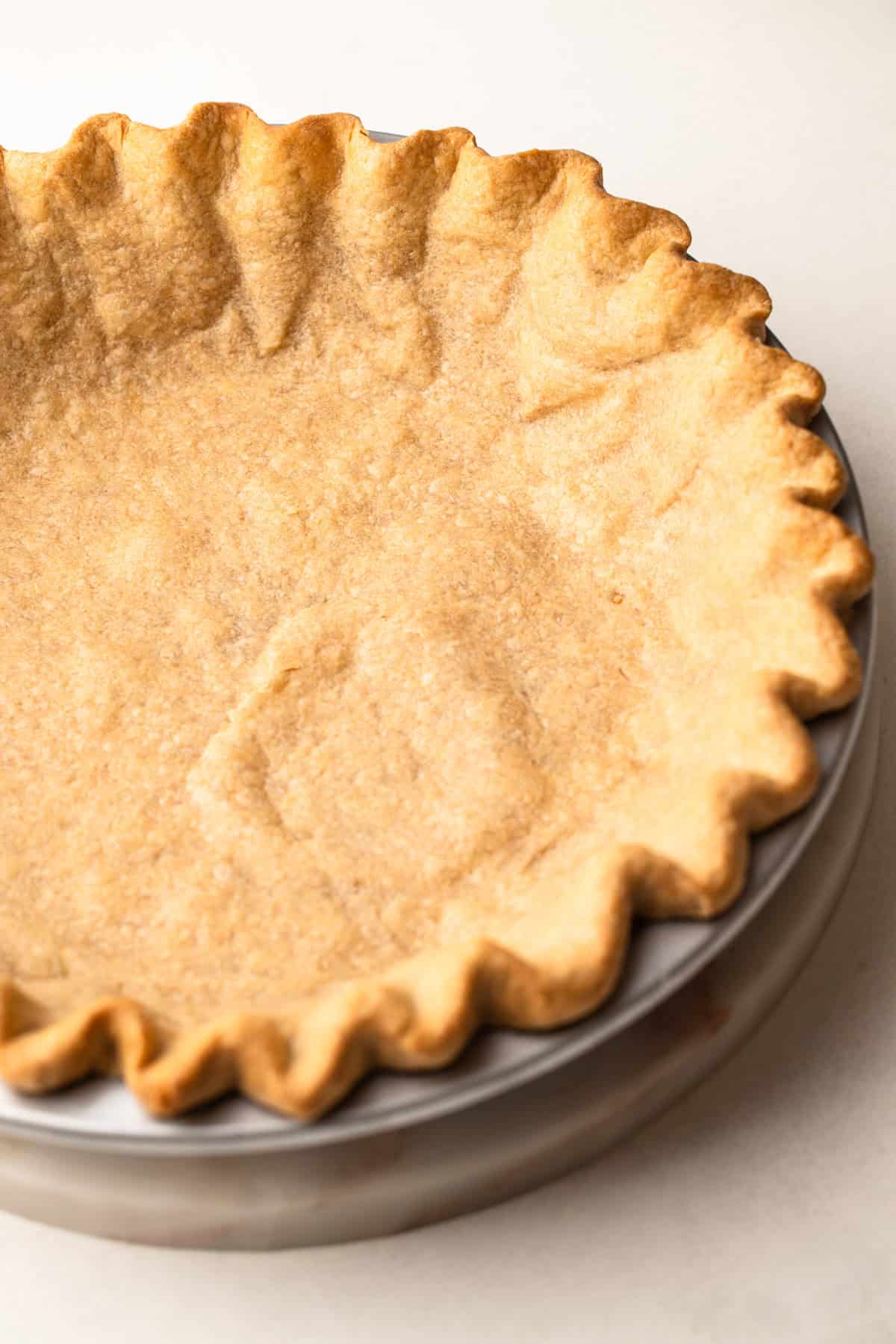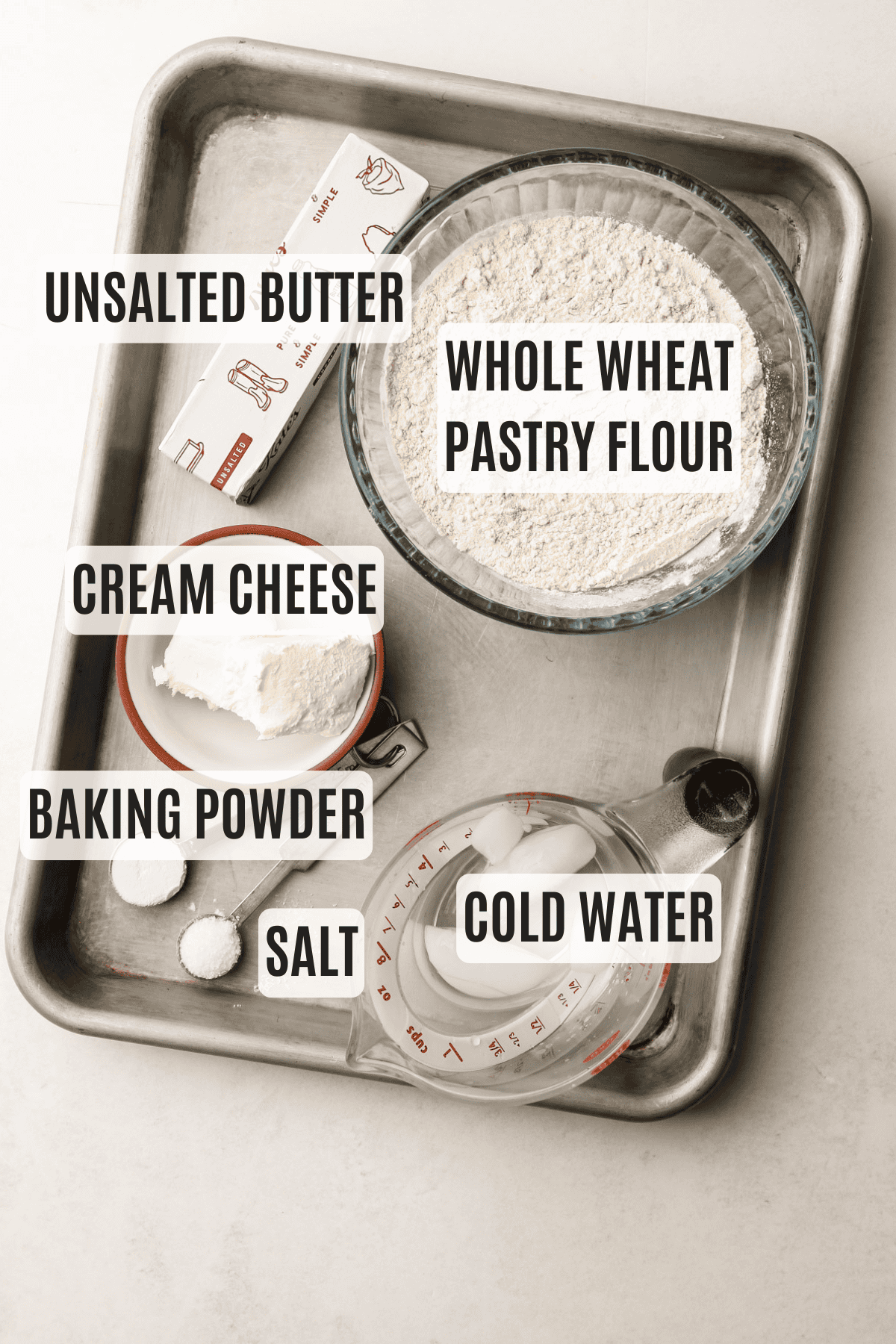How to Make the Best Whole Wheat Pie Crust from Scratch
This Whole Wheat Pie Crust is made with Whole Wheat Pie Crust pastry flour for a tender, slightly crumbly texture and a rich, nutty flavor that pairs well with both savory and select sweet pies.

Want to save this recipe?
Enter your email & I’ll send it to your inbox. Plus, get weekly updates from me!
This Whole Wheat Pie Crust, made with Whole Wheat Pie Crust pastry flour, has a delicate texture that’s more crumbly than flaky and a nuanced flavor compared to an all-purpose flour crust. I know when people hear “whole wheat,” they often expect something dense, tough, or overly wheaty—at least, that’s what some of my friends and family told me before they tried a few pies with my whole wheat crust. But once they took a bite, they were hooked! So don’t let the name fool you—whole grain crusts can be a fantastic addition to a pie when made well.
What I love about this crust is that it’s made with 100% whole wheat flour, rather than a blend with all-purpose flour. The combination of cream cheese and butter adds a soft tang that complements the whole grain perfectly. If you prefer not to use cream cheese, you can swap it for the same amount of additional butter, though I highly recommend keeping it. A little baking powder is also added to give the crust a slight lift, preventing it from feeling too dense from the whole wheat.
A Whole Wheat Pie Crust works well for savory pies. It’s sturdy enough to support a heavier filling and won’t overpower a savory pie, which typically has stronger flavors. It can also complement certain sweet pies, like this Apple Butter Pie or Honey Walnut Pie.
Ingredients Needed and Substitutions

Here is a brief overview of the ingredients needed for this recipe. The full recipe with quantities is listed below this text in the recipe card.
- whole wheat pastry flour: Find this in the aisle where you find other flour, it typically comes in a much smaller bag than regular flour.
- cream cheese: Just a little bit adds a soft tang and helps tenderize the whole wheat crust…if you prefer, you can swap it for the same amount of butter, but I highly recommend keeping it.
- unsalted butter: This recipe is designed for regular American butter. If you use higher-fat European butter, you may need less liquid and a bit more flour, so it’s not recommended.
- baking powder: not typically included in pie crusts, but it is useful with whole wheat flour to help tenderize and aerate it.
- salt: This recipe was tested using Diamond Crystal coarse kosher salt. If you use Morton’s kosher salt or fine salt, decrease by half for volume or use the same amount by weight. Want to learn more about this? Check out this Guide to Baking with Salt.
- cold water: It doesn’t need to be ice water, but it should be very cold.
Whole Wheat Pie Crust flour is different than regular whole wheat flour. The pastry flour is milled from a softer white wheat (as opposed to the hard red wheat that regular whole wheat flour is) and has a lower protein content. It retains a lot more of the nutritional benefits since it is a whole grain but it has fewer gluten proteins than common wheat. This makes it more tender and delicate, but it also means this dough can be more fragile when you are moving it around. The finished dough has the consistency of soft play dough. Treat it gently and you will find it simple to work with.
Step-By-Step Recipe Overview
Whole Wheat Pie Crust
All pie crusts should be thoroughly chilled before baking. While most crusts bake at a high temperature (around 425ºF), this whole wheat dough does best at a slightly lower temperature, around 375ºF (but no higher than 400ºF), to prevent burning. However, every pie filling is different, so balance this with the specific recipe you’re using. On this website, each pie recipe includes baking instructions for the crust, so be sure to follow those for the best results.
You can roll out the dough right away, though it’s softer than traditional pie dough. Use plenty of flour and a gentle touch, or chill it first if it feels too tricky to handle.
Even though it rolls out immediately, it still needs to chill in the pie tin before baking—at least an hour in the fridge or 30 minutes in the freezer. If you’re not baking it right away, wrap it in plastic and store it for about 2-3 days in the refrigerator. It can be frozen for 3-6 months. Thaw out frozen dough in the refrigerator the night before you plan to use it.
This Whole Wheat Pie Crust is made with whole wheat pastry flour for a tender, slightly crumbly texture and a rich, nutty flavor that pairs well with both savory and select sweet pies.
- 1-½ cup (180 grams) whole wheat pastry flour
- ½ teaspoon baking powder
- ¼ teaspoon coarse kosher salt (see note)
- ½ cup (113 grams) cold unsalted butter diced
- 2 tablespoons (30 grams) cold cream cheese
- ¼ cup cold water, more if needed
Instructions
- Add the Whole Wheat Pie Crust, baking powder, and salt to the bowl of a food processor. Pulse until combined. Add in the cream cheese and pulse, 2-3 times to combine. Add in the butter and pulse 7 times, until the butter is barely visible.. With the motor running, slowly pour the water into the flour. The dough should be crumbly and it should hold together when squeezed.
- Empty the flour mixture onto a work surface. If there are any dry spots, drip (or spray) a bit more water on them then bring the pile of dough together.
- The dough can be rolled out immediately, but let it chill in the pie tin before baking for at least 1 hour in the refrigerator or 30 minutes in the freezer. Or you can wrap it in plastic wrap and keep it for up to 2 days in the refrigerator or up to 6 months in the freezer.
Notes
Weighing your flour is the most accurate way to measure it. If you’re not weighing it, spoon the flour into the measuring cup and level it off. This website consistently uses 120 grams per cup of flour. Scooping directly with the measuring cup can pack in more flour, often exceeding 120 grams, which may affect the final result.
This recipe was tested using Diamond Crystal coarse kosher salt. If you use Morton’s kosher or fine salt, decrease the volume by half.
You can store this pie dough in the refrigerator for 2 days or the freezer for up to 3 months. If you plan to store it for an extended period, wrap it in a double layer of plastic wrap.
Since this pie dough includes whole wheat, bake it at a slightly lower temperature than an all-purpose flour crust. It’s best at 375ºF but can go up to 400ºF—keep an eye out for burning.
This recipe tutorial was originally published in 2019. Since then, I’ve updated the accompanying article and step-by-step tutorials to offer the best possible guidance on how to make it.
Did you make this recipe?
Some of the links on this page may be affiliate links. Everyday Pie is a participant in the Amazon Associates Program. As an Amazon Associate, I earn from qualifying purchases, at no extra cost to you.






